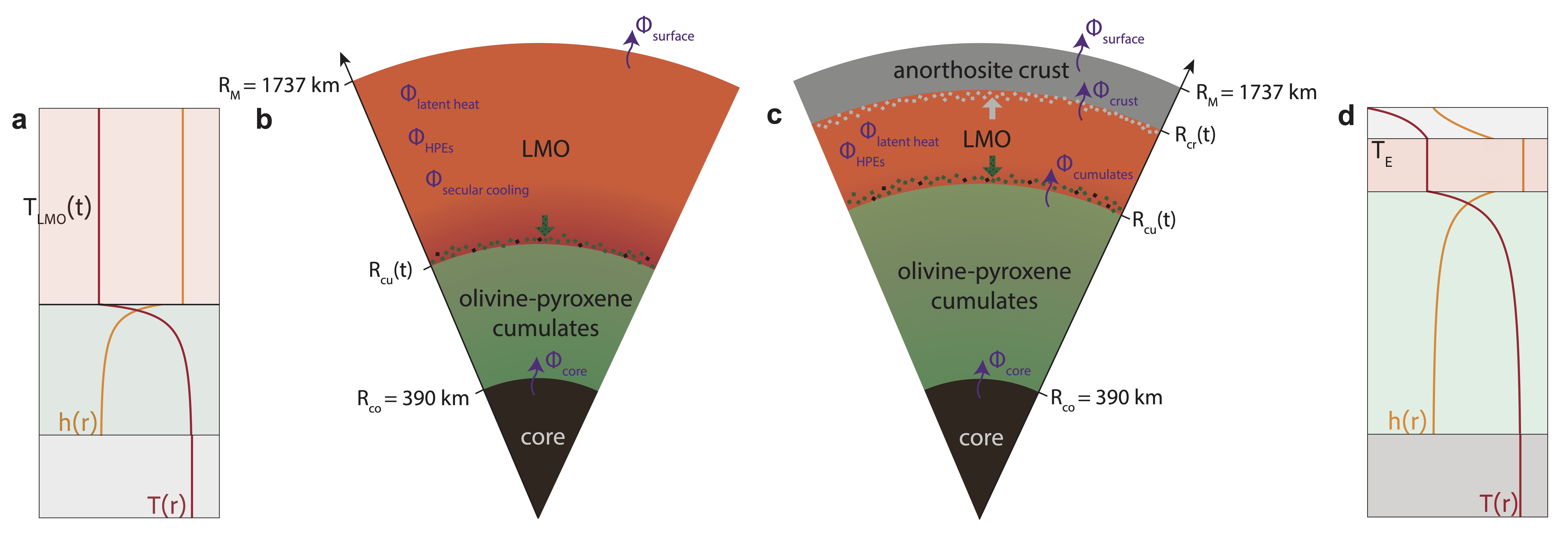Line Colin’s paper on the evolution of the lunar magma ocean
The energy of the giant impact was large enough to generate an initially fully molten Moon. During the solidification of this lunar magma ocean (LMO), an anorthosite crust formed by flotation of light anorthite crystals. Lunar anorthosites show crystallization ages as young as 4.360 Gyr, suggesting a long-lived LMO or a rather young Moon. Existing models for LMO solidification are for a specific phase diagram based on one compositional model. However, the LMO solidification timescale depends on the lunar bulk composition and on the appearance of anorthite in the crystallization sequence.
Here, we propose a physically robust 1D model for LMO evolution based on a simple anorthite/olivine-pyroxene eutectic phase diagram. Cumulates first settle at the ocean base for about a thousand years. This first stage results in an unstable thermal profile for the cumulates that can lead to their overturn. In the second stage, simultaneous crystallization of anorthite and cumulates leads to the formation of a buoyant lid that considerably slows down LMO cooling.
We explore the impact of an initially hydrated composition, which reduces the stability of plagioclase, of the eutectic position and of the crust thermal conductivity. We show that cumulates overturn may reduce or extend the LMO solidification time depending on its duration. The total LMO solidification timescale ranges between 45 and 250 Myr. Given the most reliable age of 4.360 Gyr for FAN sample 60025, which derives from more than 99% of crystallization, we estimate an age of 4400 to 4560 Myr for the Moon.
This paper is open access and the paper is available here.
Full citations:
Colin, L., Michaut, C., Labrosse, S., and Bourdon, B. Thermal evolution of the lunar magma ocean. Earth Planet. Sci. Lett., 648:119109, 2024. https://doi.org/10.1016/j.epsl.2024.119109
